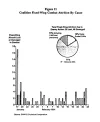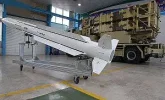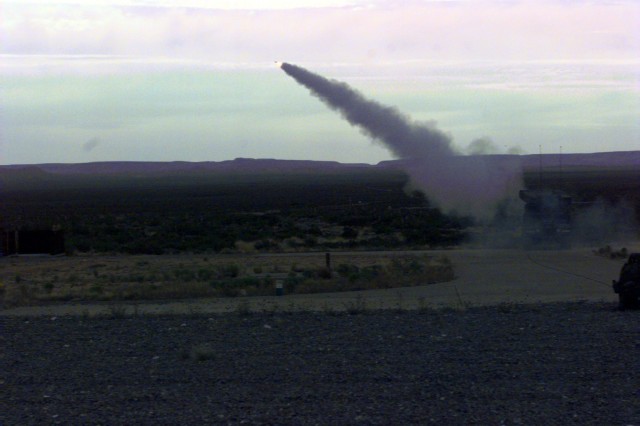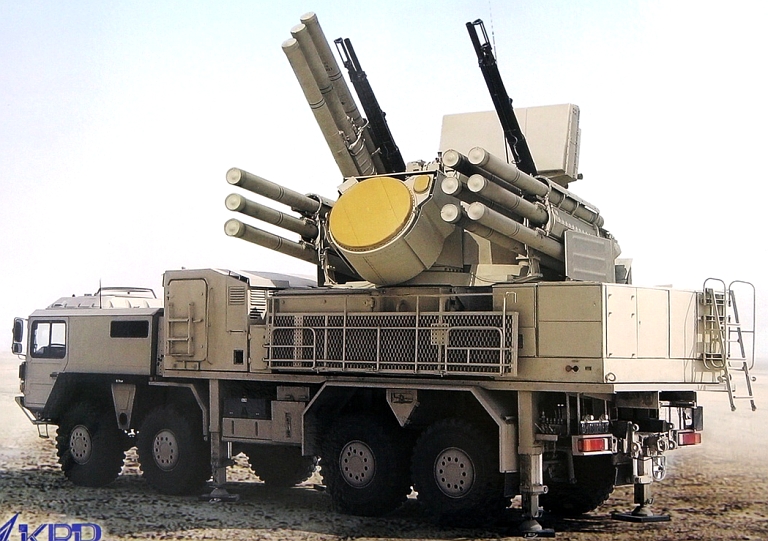Jenkkien ilmatorjunta kaipaa laajempaa tehokkuuden mittausta.
Brig. Gen. Christopher Spillman, commanding general, 32nd Air and Missile Defense Command, speaks to audience members attending the Association of the United States Army Institute of Land Warfare Hot Topic: Army Air & Missile Defense, A Professional Development Forum, held at the AUSA Conference and Event Center in Arlington, Va., Feb. 7, 2017. (Photo Credit: Sgt. Jose A. Torres Jr.)
VIEW ORIGINAL
2 / 2HIDE CAPTION –National Guardsmen with A Company, 3rd Battalion, 200th Air Defense Artillery, N.M., fire a stinger missile from an Avenger platform, June 13, 2001, at Orogrande Range near Fort Bliss Texas, during a Roving Sands exercise. Roving Sands was a joint air defense exercise involving multiple military branches as well as several nations all working together. The exercise has been discontinued, but some in the air and missile defense community hope to launch a similar exercise in the future. (Photo Credit: Staff Sgt. Brendan Stephens)
VIEW ORIGINAL
WASHINGTON (Army News Service) -- The Roving Sands air and missile defense exercise, last held 28 years ago, served as a platform for doctrine development, a demonstration of technology, and ultimately as a validation of the expertise of the units who participated.
These days, Army air and missile defense exercises of that sort are thing of the past, but that soon may change, if Brig. Gen. Christopher Spillman has his way.
"One of the things we in the air defense community don't have ... is a combat training center-like evaluation," said Spillman, who serves as commander of the 32nd Air and Missile Defense Command. "We don't have external evaluation."
Speaking at an Association of the U.S. Army event Tuesday in Arlington, Virginia, Spillman said the air defense community needs that validation back to demonstrate to the rest of the Army what the defense community already knows.
"Only we know if we are good or not," he said. "The rest of the Army doesn't, because they lack the expertise. We in the air defense artillery, we have the skills; we have the expertise; we know whether or not we're good. So we need an external evaluation. We need a combat training center-like evaluation."
The general said he has already made efforts toward rebuilding a large, collective training exercise like Roving Sands, and speculated that such an event could be held at Fort Bliss, Texas.
"I'm going to try to figure out a way to resource that thing and demonstrate from a 32nd [Army Missile Defense Command] down to the lowest fire team ... our ability to execute air and missile defense ... So it's something I'm going to tee up here fairly soon," Spillman said.
Roving Sands involved multinational partners working together to hone their air and missile defense skills, and that's something Spillman said must return -- but it won't happen right away, he said.
Initially, Spillman said, efforts toward rebuilding an air and missile defense training and validation exercise will involve "baby steps" but it's an effort worth working toward.
GUARD PARNTERS
In March 2016, the Army announced the "Associated Units" program, which matches regular Army units with Army National Guard units to enhance training and readiness. A total of 27 units are participating in the program: 14 National Guard units are matched up with 13 regular Army units.
But none of those are air and missile defense units, and Spillman said he thinks the Army Missile Defense Command community ought to participate in the program.
"I have expressed to [Lt. Gen. Patrick J. Donahue, deputy commander, Army Forces Command] that we ought to be under consideration as a potential associate unit member with a National Guard battalion," Spillman said. "I think it makes a lot of sense."
The general said there is a continuing demand for short-range air defense capability and for taking short-range air defense capability to the combat training centers.
"I've advocated that [32nd AMDC] should be seeking an associated unit relationship with the 1-204th [Air Defense Artillery] out of Mississippi, and the 1-188th out of North Dakota," Spillman said.
"Both of those battalions are standalone battalions, they don't have a higher air defense artillery brigade structure on top of them. I think there is a lot of synergy that can be gained by putting a brigade commander over the top of those battalions."
https://www.army.mil/article/182039?g















